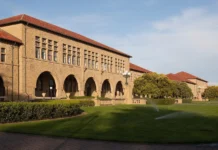The Białystok Ghetto uprising against the Nazi German occupation authorities during World War II was launched on the night of August 16, 1943 and was the second-largest ghetto uprising organized in Nazi-occupied Poland after the Warsaw Ghetto Uprising of April–May 1943. It was led by the Anti-Fascist Military Organisation (Antyfaszystowska Organizacja Bojowa), a branch of the Warsaw Anti-Fascist Bloc.
The revolt began upon the German announcement of mass deportations from the Ghetto. The main objective was to break the German siege and allow the maximum number of Jews to escape into the neighboring Knyszyn (Knyszyński) Forest. A group of about 300 to 500 insurgents armed with 25 rifles and 100 pistols as well as home-made Molotov cocktails for grenades, attacked the overwhelming German force with a great loss of life. Leaders of the uprising committed suicide. About 150 combatants managed to break through and run into the Knyszyn Forest where they joined other guerrilla groups.
The Białystok Ghetto was set up by Nazi Germany in occupied Poland soon after the German invasion of the Soviet Union. In February 1943, the first wave of mass deportations to Treblinka extermination camp took place, organized during country-wide Aktion Reinhard. The final liquidation of the Ghetto was attempted on August 16, 1943 by regiments of the German SS reinforced by Ukrainian, Belarusian, and Latvian auxiliaries (“Hiwis”), known as the “Trawniki men”. During the night of August 16, 1943, several hundred Polish Jews started an armed uprising against the troops carrying out liquidation of the Ghetto. The guerillas led by Mordechaj Tenenbaum and Daniel Moszkowicz were armed with only one machine gun, rifles, several dozen pistols, Molotov cocktails and bottles filled with acid. As with the earlier Warsaw Ghetto Uprising extinguished in May 1943, the Białystok uprising had no chances for military success. However, it was seen as a way to die in combat rather than in German camps. A Betar youth commander was Yitzhak Fleischer, also spelled Fleisher, or Berl Fleischer according to different source.
The fights in isolated pockets of resistance lasted for several days, but the defence was broken almost instantly with a tank sent into the ghetto by SS Gruppenfuhrer Odilo Globocnik. German soldiers set fire to the area. The commanders of the struggle committed suicide after their bunkers ran out of ammunition. In spite of the insurgency, the planned deportations to concentration and extermination camps went ahead on August 17, 1943 without any delay. Approximately 10,000 Jews were led to the Holocaust trains and sent to camps in Treblinka, Majdanek and Auschwitz. Approximately 1,200 children were sent to Theresienstadt concentration camp and later to Auschwitz.
Several dozen guerillas managed to break through to the forests surrounding Białystok where they joined the partisan units of Armia Krajowa and other organisations and survived the war. It is estimated that out of almost 60,000 Jews who lived in Białystok before World War II, only several hundred survived the Holocaust.
























